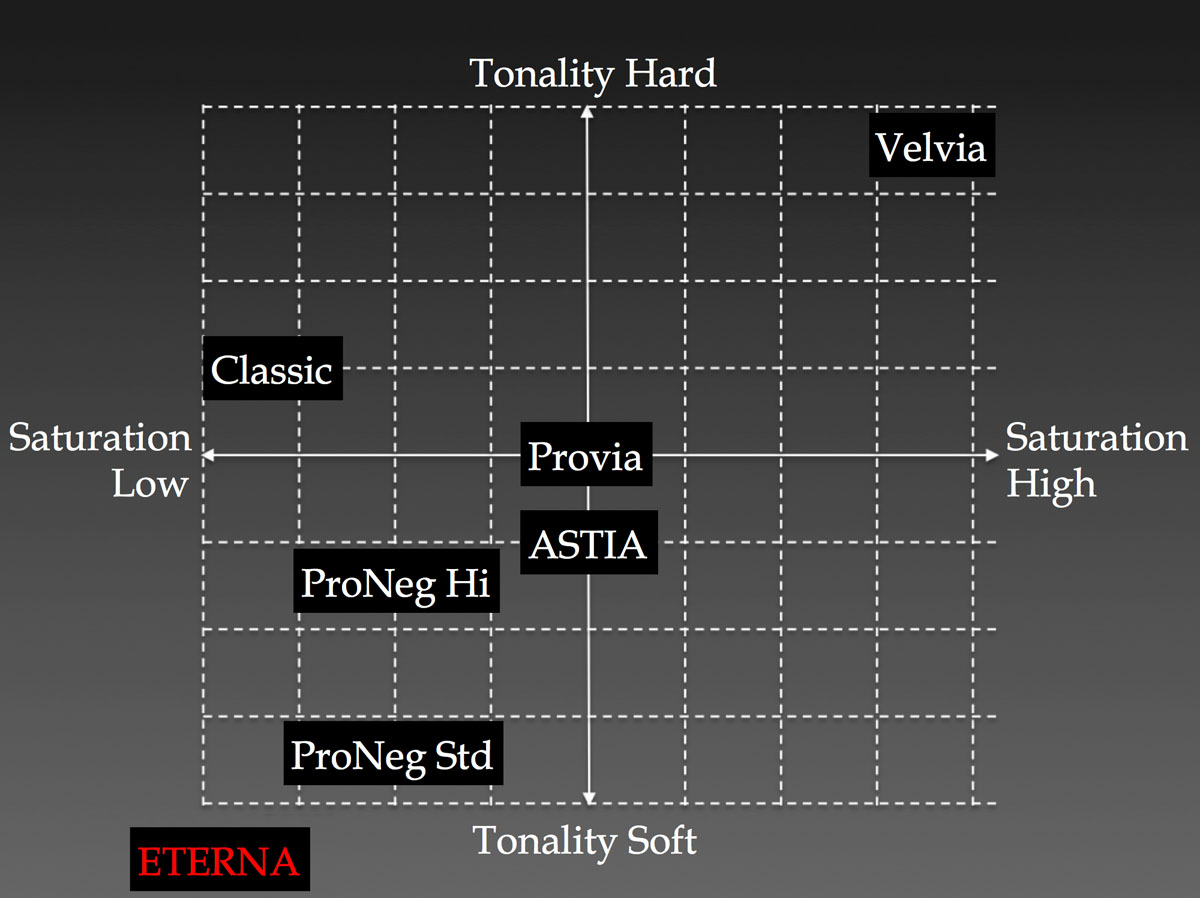
X-H1 Development Story #5
The characteristics of the new film simulation ETERNA are as described in the last story. But here comes the question. “Can it be used for still photos?” We asked the image designing team who created ETERNA mode.
“It’s possible. It can work really well in some cases.” It was an unexpected answer, but a pleasant one. We need to take ideology and the characteristics of ETERNA into account for a good result.
ETERNA has very low saturation and soft tonality. As shown in the chart, it goes beyond the grid when it is compared with other film simulation modes. ETERNA is not designed in the same way as other film simulation modes which are all intended for still photography. PROVIA will let you take great photos in any given situations, but not ETERNA. However when used right, it will give you the unique world view.
Let’s first take a look at Pro Neg.STD, which is the closest film simulation to ETERNA. Pro Neg.STD. is best suited to take shots under controlled lights, for subjects with high saturation.
One idea is to treat ETERNA as a special version of Pro Neg. STD. The wide dynamic range and soft tonality will depict the subtle nuances of shadows created in the environment under controlled lights. It will also keep the subject from being oversaturated.
People often use Velvia for landscape photography, but it can be excessive if the subject”s saturation is high. Velvia is good when you need to enhance the saturation, but when the saturation is high enough, try ETERNA or Pro Neg. STD instead.
Another idea is to treat ETERNA in the same way as you would when you shoot cinema, to complement other elements of communication. In editorial, for example, the photographs are combined with texts to deliver a message. ETERNA is a good one to use in editorial as it would complement the text. The images with soft tonality and low saturation allow readers engage into the story seamlessly.
The soft tonality of ETERNA also looks great on matte paper. So when the editorial is printed on a matte paper, then it creates an further enhanced experience for the readers. When you think of the communication in a big picture, ETERNA has its use for sure.
These are just two ideas on how to use ETERNA for still photography, but there are probably more. In the film days, it was physically not possible to put the ETERNA film in a still camera, but we are in digital era now. There are no restrictions. It is up to everyone to try the film simulation for whatever idea they come up with. Å
X-H1 Development Story
#1 Frame Pt.1
#2 Frame Pt.2
#3 Camera Body
#4 ETERNA
#5 ETERNA Pt.2
#6 Autofocus
#7 IBIS

















































